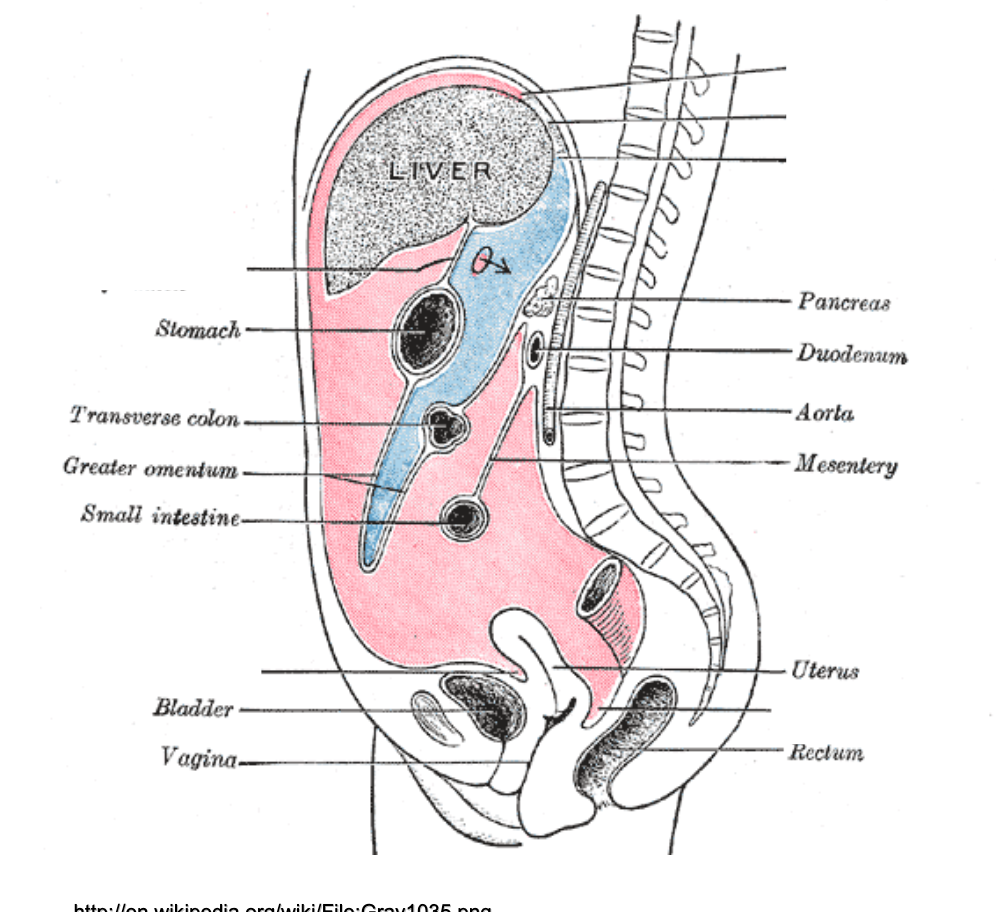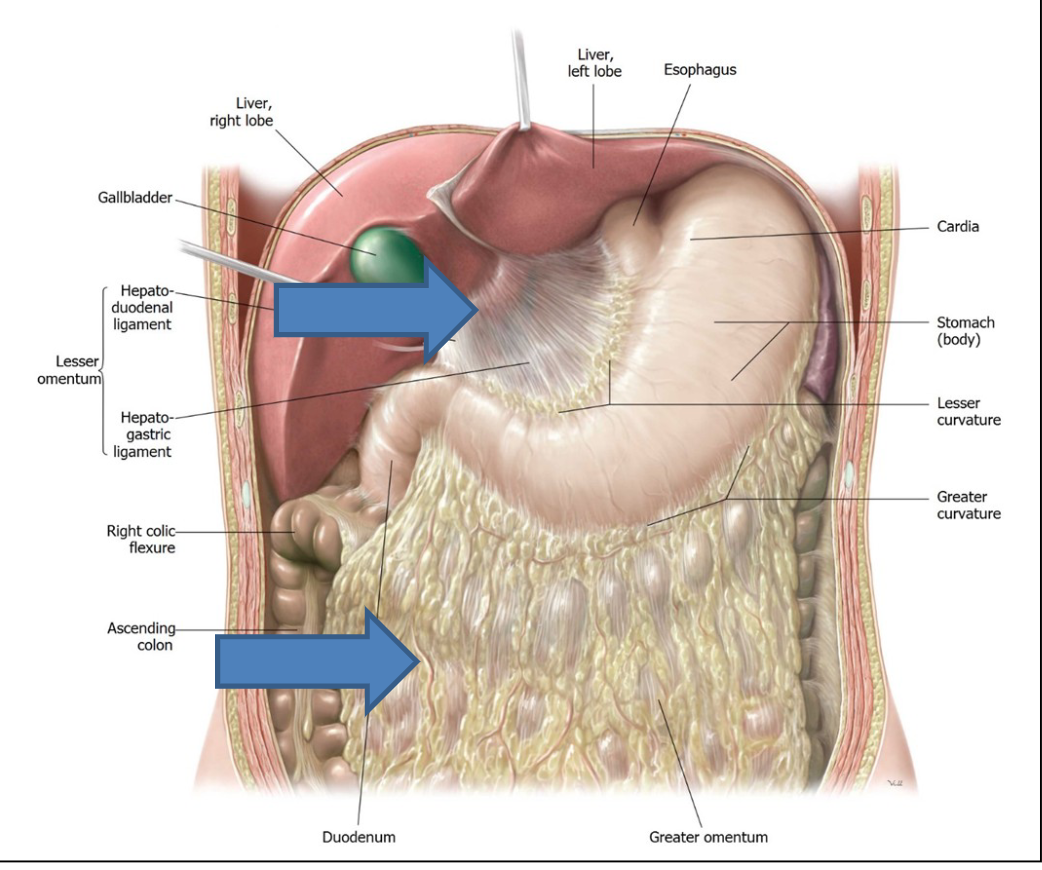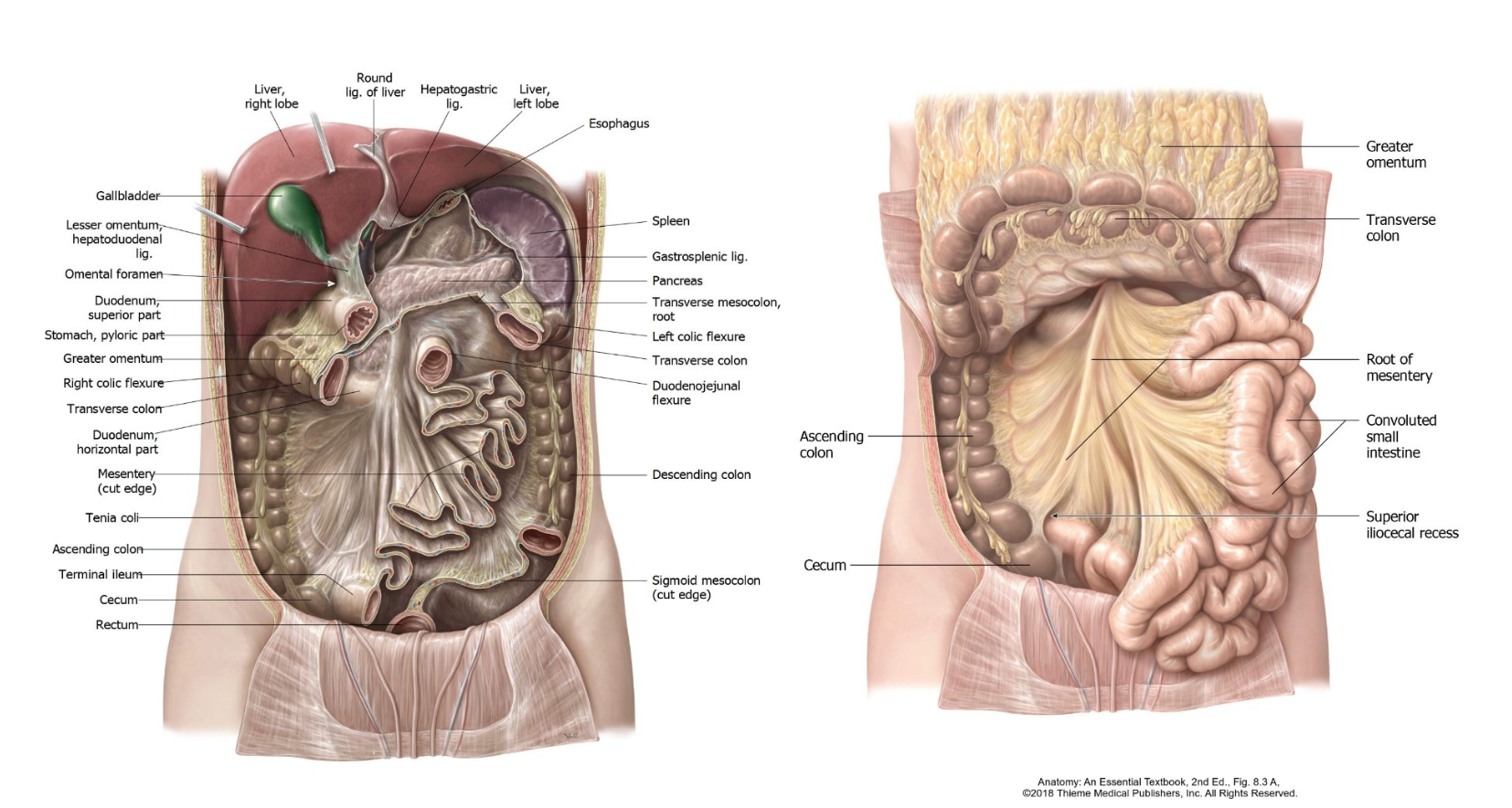6.3 Peritoneum & Abdominal Viscera
Peritoneum Overview
Definition: The peritoneum is a thin, transparent serous membrane that lines the abdominal cavity and covers abdominal organs.
Parietal Peritoneum: Lines the abdominal wall.
Visceral Peritoneum: Covers the viscera (internal organs).

Importance of the Peritoneum
Functions:
Provides a lubricated surface for abdominal organs to move against each other without friction.
Contains peritoneal fluid that allows for smooth movement of organs.
Allows the conveyance of nerves, blood vessels, and lymphatics to and from abdominal organs.
all or part of organ lies behind the peritoneum (e.g. kidneys, part of liver, ascending colon)
Peritoneal Key structures
Retroperitoneal: Refers to the organs that lie behind the peritoneum.
Examples: Kidneys, parts of the liver, and the ascending colon.
Peritoneal Ligament: A double layer of peritoneum that connects an organ to the abdominal wall.
Example: Falciform ligament of the liver.
Inferior Mesenteric: Another form of peritoneal attachment, typically connecting the intestines.
Omentum: double layered fold passing from stomach to adjacent organ
MESENTERY: double layer which encloses an organ and connects it to
abdominal wall; vessels lie in mesentery (e.g. small intestine,
stomach, transverse colon)


Key Structures within the Peritoneal Cavity
Lesser Sac (Omental Bursa): The area behind the stomach and liver.
Greater Sac: The larger part of the peritoneal cavity which encompasses most of the abdominal organs.
Omental Foramen: An opening between the lesser and greater sacs, located near the gallbladder.
Organ Mapping
Structures to Label:
Greater omentum
Lesser sac
Greater sac
Supracolic compartment (above the transverse colon)
Infracolic compartment (below the transverse colon)
Digestive Organs and Their Functions:
Stomach: Digests food chemical and mechanically.
Liver: Processes nutrients, detoxifies, and produces bile.
Small intestine: Absorbs nutrients.
Transverse colon: Reabsorbs water and salts, forms stool.
Enteric Nervous System (ENS)
Function: The ENS governs the function of the gastrointestinal system.
Comparative Functions:
Parasympathetic Nervous System (PNS): Increases digestive activities (rest and digest).
Sympathetic Nervous System (SNS): Decreases digestive activities (fight or flight).
Additional Anatomy Considerations
Membranes Around Other Organs:
Pleura: Membranes around the lungs (parietal and visceral pleura).
Pericardium: Membranes around the heart (parietal and visceral pericardium).
Summary of Key Points
The peritoneum is crucial for the movement, protection, and function of abdominal organs.
It consists of features like peritoneal ligaments, mesentery, and omentum which play vital roles in organ attachment, blood vessel supply, and immune function.
Understanding the structure and function of the peritoneum is essential for grasping how the abdominal organs interact and function within the body, including the effects of the autonomic nervous system on these processes.